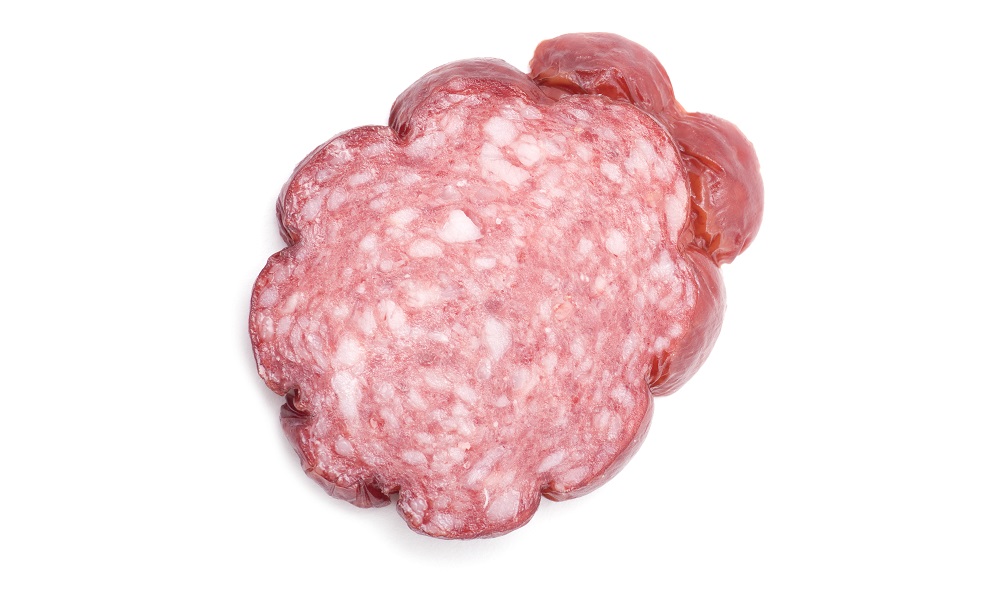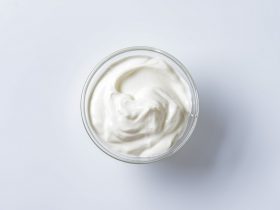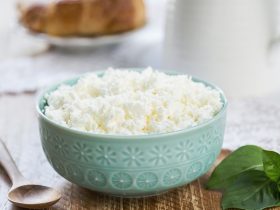A lot of food borne illnesses have been linked to eating contaminated deli meats and other ready to eat (RTE) products. Summer sausage is one such RTE food that has long been developed even before the age of refrigeration technology. Before the end of the winter season, summer sausage is traditionally made from beef or pork, cured with salt, then dried to be preserved until the months of summer.
Presently, summer sausage is a term used for any type of sausage that can be kept without refrigeration until it is opened. Considered a deli meat, summer sausage is recommended to be avoided during pregnancy. It can be safely eaten, however, when it is properly cooked to an appropriate temperature or until steaming hot.
What is Summer Sausage?

Summer sausage is a fermented meat product that can be found almost anywhere in the world (Utama et al., 2018). It was originally developed in Europe before the invention of refrigerators. Different preservation methods were applied to keep meat from spoiling in the months of summer, hence the name “summer” sausage.
Meat is one of the oldest perishable foods, hence fermentation and drying as preservation methods have also long been developed. Fermented sausages can be made from pork or beef, and then mixed with spices (Utama, et al., 2018). The curing recipe may have varied from one family to another, but the basic ingredients are beef, pork, salt, and pepper.
Summer sausage has a tangy taste as a result of fermentation with a low pH that slows the growth of bacteria. Presently, many kinds of summer sausages are being produced. These include salami, pepperoni, and Spanish chorizo.
In the USA, summer sausage refers to any type of sausage that can be kept without the need for refrigeration until the package is opened. It is made from either lean beef, pork, pork fat, or fatty pork trimmings.
Salt, nitrite and spices (black and white pepper, mustard seed, nutmeg, garlic, coriander, allspice) are added to the meat mixture. Starter cultures and citric acid are also introduced.
Then, the sausage mass is filled into fibrous casings and fermented at high temperatures of 30 to 40 degrees Celsius. The final pH drops to around 4.5. The resulting sausage is then either dried or smoked until the desired weight loss is achieved.
Summer sausages are typically served thinly sliced and eaten raw while paired with cheese, crackers, dried fruits, nuts, or wine, or added to sandwiches. Popular brands are Hillshire Farm, Hickory Farms, and Old Wisconsin.
Food Borne Pathogens in Cured Sausages
Escherichia Coli
Shiga toxin-producing Escherichia coli (STEC) is a food borne pathogen associated with several outbreaks linked to dry-fermented sausages (Holck et al., 2011; Rode et al., 2017).
To reduce the survival of E. coli in fermented sausages, combinations of meat pre-treatment, salt, nitrite, lactic acid, low pH, starter culture, and antimicrobial compounds are used. Fermentation temperature and storage time also play important roles (Holck et al., 2011).
Enterohemorrhagic E. coli (EHEC) is a subgroup of STEC that leads to severe illness in humans with an infectious dose as low as 1 to 100 bacteria (Rode et al., 2017). The principal route of transmission for EHEC and other STEC to humans is contaminated food (Erickson & Doyle, 2007).
Studies have shown that despite exposure to high salt concentrations and an acidic environment in dry-fermented sausages, certain strains of EHEC can still survive (Rode et al., 2017).
Trichinella Spiralis
In 1976, Potter et al. reported a case of Trichinosis among 23 members of a Dutch-German family and their close friends in Illinois after eating raw homemade summer sausage. 12 of the patients were admitted to the hospital for an average of 10 days each. Two Illinois state laboratories, which investigated this outbreak, found Trichinella spiralis larvae in the sausage samples.
Listeria Monocytogenes
Listeria monocytogenes is one of the most harmful food borne pathogens (Phung et al., 2020). It has been recognized as an important pathogen present in food in the late 20th century (Schlech, 2000).
Several studies have shown that RTE meats are important vehicles for L. monocytogenes transmission in humans. RTE meats are often refrigerated for long periods and consumed without cooking (Phung et al., 2020).
L. monocytogenes is ubiquitous in nature and may contaminate food post-production. It can also survive even with cold storage and grow to significant numbers to cause Listeriosis (Phung et al., 2020).
Listeriosis infection can result in clinical syndromes that include sepsis, febrile gastroenteritis, and meningoencephalitis. In pregnant women, it can cause severe and life-threatening complications, including bacteremia, meningitis, seizures, miscarriage, and death (Schlech, 2000).
Different studies revealed the presence of L. monocytogenes in several RTE beef, pork and poultry products (Phung et al., 2020). Among recorded outbreaks and sporadic cases of Listeriosis that were associated with food starting from 1996 to 2018, RTE sausages were one of the most common food products identified as the cause (Desai et al., 2019).
In 2008, Thuc et al. demonstrated that 21.7 percent of sausage samples collected from Hanoi market in Vietnam from 2006 to 2007 were contaminated with L. monocytogenes. In 2020, Phung et al. mentioned another outbreak of L. monocytogenes back in 2019 in Spain, Netherlands and Belgium that was linked to consumption of RTE meat products. There was a total of 243 cases, 6 mortalities and 7 fetal deaths reported. In the same study, the occurrence of L. monocytogenes in sausage samples collected from 2013 to 2015 was found to be at 14.7 percent.
Is Summer Sausage Safe to Eat During Pregnancy?

Any type of sausage that has been thoroughly and freshly cooked is safe to eat during pregnancy. Depending on which meat the sausage is made of, the minimum safe internal temperature it should be heated to varies.
According to the U.S. Department of Agriculture (USDA, 2020), for sausages made with beef, pork, veal or lamb, an internal temperature of 160 degrees Fahrenheit (or 71 degrees Celsius) is recommended. While for those made with poultry (including turkey or chicken), a temperature of 165 degrees Fahrenheit (or 74 degrees Celsius) must be achieved.
Summer sausage generally has less water content and more salt and nitrates compared to other types of sausages. This makes it more difficult for bacteria to grow.
However, summer sausage is still a deli meat that is considered unsafe for pregnant women to eat. Any other type of cured sausages, like salami, pepperoni, chorizos and prosciutto, are also unsafe for consumption by pregnant women. Unless, of course, they have been cooked until steaming hot prior to eating.
Another concern would be cross-contamination. Always separate and wash any cutting boards, countertops, utensils, and knives that have come in contact with raw meat. Also do not forget to wash your hands before and after food preparation.
Final Thoughts
Summer sausages can be enjoyed during pregnancy as long as they have been properly heated until steaming hot. Cooking to appropriate temperatures kills off any potential pathogen that may be present in the meat. Any type of raw sausages, on the other hand, are best avoided throughout pregnancy.
Remember to always consult your health care providers prior to any dietary changes in pregnancy, and regarding any concerns you may have about food consumption.
References
- https://hemplers.com/what-is-summer-sausage-and-how-do-i-use-it/
- https://www.insidehook.com/article/food-and-drink/what-is-summer-sausage-why-christmas-winter-favorite-classic
- https://www.gourmetgiftbaskets.com/Blog/post/the-mysterious-summer-sausage-why-such-a-seasonal-name.aspx
- https://www.sciencedirect.com/topics/agricultural-and-biological-sciences/summer-sausage
- https://www.healthline.com/health/pregnancy/can-you-eat-sausage-when-pregnant
- Desai, A., Anyoha, A., Madoff, L., & Lassmann, B. (2019). Changing epidemiology of Listeria monocytogenes outbreaks, sporadic cases, and recalls globally: A review of ProMED reports from 1996 to 2018. International Journal of Infectious Diseases 84, 48-53. doi: 10.1016/j.ijid.2019.04.021
- Erickson, M., & Doyle, M. (2007). Food as a vehicle for transmission of Shiga toxin-producing Escherichia coli. Journal of Food Protection 70(10), 2426-2449. doi: 10.4315/0362-028x-70.10.2426
- Holck, A., Axelsson, L., Rode, T. M., Hoy, M., Mage, I., Alvseike, O., …, & Heir, E. (2011). Reductio nof verotoxigenic Escherichia coli in production of fermented sausages. Meat Science 89(3), 286-295. doi: 10.1016/j.meatsci.2011.04.031
- Phung, T., Tran, T., Pham, D., To, A., & Le, H. (2020). Occurrence and molecular characteristics of Listeria monocytogenes isolated from ready-to-eat meats in Hanoi, Vietnam. Italian Journal of Food Safety 9(3), 8772. doi: 10.4081/ijfs.2020.8772
- Potter, M. E., Kruse, M. B., Matthews, M. A., Hill, R. O., & Martin, R. J. (1976). A sausage-associated outbreak of trichinosis in Illinois. American Journal of Public Health 66(12), 1194-1196. doi: 10.2105/ajph.66.12.1194
- Rode, T. M., McLeod, A., Mage, I., Heir, E., Axelsson, L., & Holck, A. (2017). Survival of five strains of Shiga toxigenic Escherichia coli in a sausage fermentation model and subsequent sensitivity to stress from gastric acid and intestinal fluid. International Journal of Microbiology 2017, 5176384. doi: 10.1155/2017/5176384
- Schlech, W. F., 3rd. (2000). Foodborne listeriosis. Clinical Infectious Diseases 31(3), 770-775. doi: 10.1086/314008
- Thuc, N. M., Hung, T. M., Le, T. T., & Anh, T. K. (2008). Primary investigation of Listeria monocytogenes infection in foods in Hanoi market using polymerase chain reaction. Vietnam Journal of Science and Technology 46(2), 67-77. https://vjol.info.vn/index.php/jst/article/view/5300/5022
- U.S. Department of Agriculture. (2020). Cooking meat: Check the new recommended temperatures. https://www.usda.gov/media/blog/2011/05/25/cooking-meat-check-new-recommended-temperatures
- Utama, D. T., Park, J., Kim, D. S., Kim, E. B., & Lee, S. K. (2018). Effect of ground chopi (Zanthoxylum piperitum) on physicochemical traits and microbial community of chicken summer sausage during manufacture. Korean Journal for Food Science of Animal Resources 38(5), 936-949. doi: 10.5851/kosfa.2018.e26




